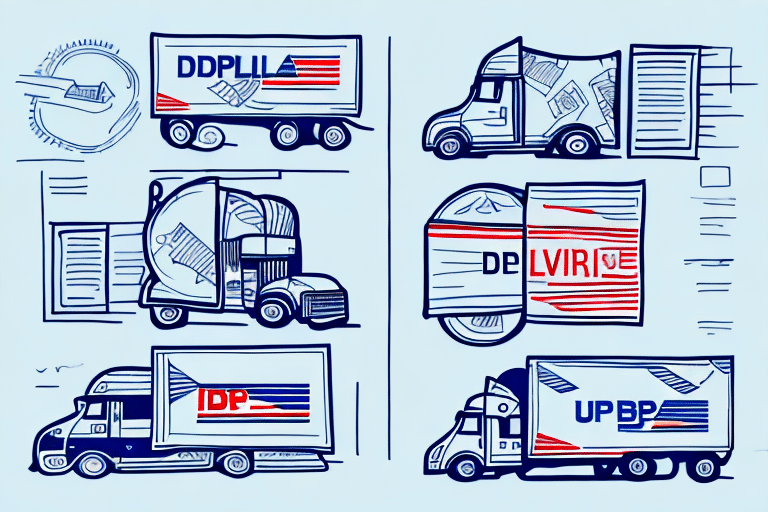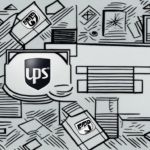Is USPS Better Than UPS? A Comprehensive Comparison
In the world of shipping and delivery, two giants stand out: the United States Postal Service (USPS) and United Parcel Service (UPS). Both companies offer a range of services, from national to international shipping. But which is better? In this comprehensive comparison, we will examine the history, services, pricing, delivery speed, coverage area, tracking and security features, customer service, shipping options, advantages, challenges, recent changes, and future outlook of both USPS and UPS. By the end of this article, you should have a clear idea of which shipping company is right for you.
History and Overview of USPS and UPS
The USPS was founded in 1775 by Benjamin Franklin, making it one of the oldest federal agencies in the United States. Over the centuries, USPS has evolved, becoming an independent establishment of the executive branch in 1971. Its services include First-Class Mail, Priority Mail, Express Mail, Parcel Post, and Media Mail.
UPS, on the other hand, was established in 1907 as a private messenger and delivery service. It has grown into a global leader in logistics, offering services such as UPS Ground, UPS Next Day Air, UPS 2nd Day Air, UPS 3 Day Select, and UPS Worldwide Express.
Despite being competitors, USPS and UPS have collaborated on several initiatives. In 2003, they launched "SurePost," a hybrid service combining UPS's transportation with USPS's final delivery, benefiting e-commerce businesses by reducing shipping costs. Both companies are also committed to sustainability, implementing eco-friendly initiatives to lower their carbon footprints.
Services Offered by USPS and UPS
Domestic Shipping Services
USPS excels in sending mail and packages to residential addresses, offering services like:
- First-Class Mail
- Priority Mail
- Express Mail
- Parcel Post
- Media Mail
UPS is preferred for commercial deliveries, providing options such as:
- UPS Ground
- UPS Next Day Air
- UPS 2nd Day Air
- UPS 3 Day Select
- UPS Worldwide Express
International Shipping Services
Both USPS and UPS offer robust international shipping options. USPS provides:
- First-Class Mail International
- Priority Mail International
- Global Express Guaranteed
UPS offers:
- UPS Worldwide Express
- UPS Worldwide Expedited
- UPS Standard
Both carriers handle customs clearance to ensure smooth international deliveries. According to the USPS official website, USPS handles approximately 47% of all domestic mail in the United States, highlighting its extensive reach.
Pricing and Cost Comparison
When comparing costs, USPS is generally more affordable for smaller packages and standard shipping needs. For example, a standard Priority Mail package typically starts at $8.70, making it a cost-effective choice for personal and small business shipments.
UPS tends to be more cost-effective for larger and heavier packages. UPS Ground rates for heavy shipments can offer better value compared to USPS’s offerings. Additionally, UPS provides specialized services for shipping hazardous materials and perishable goods, which USPS does not.
Distance also plays a role in pricing. USPS is often cheaper for short-distance shipments, whereas UPS offers competitive rates for long-distance and international shipping. According to the UPS Tracking Services, UPS’s volume-based pricing can lead to significant savings for businesses shipping large volumes.
It's essential to compare rates based on your specific shipment details. Tools like USPS Price Calculator and UPS Shipping Calculator can help determine the most cost-effective option.
Delivery Speed and Coverage Area
Delivery Speed
UPS generally offers faster delivery options, including same-day and next-day services. For instance, UPS Next Day Air ensures delivery by the next business day, which is ideal for urgent shipments.
USPS offers a range of delivery speeds, but it typically lags behind UPS for expedited services. However, USPS Priority Mail often delivers within 1-3 business days, which is competitive for standard shipments.
Data from the Pew Research Center indicates that USPS handles approximately 47% of U.S. mail volume, showcasing its extensive domestic network.
Coverage Area
USPS boasts a universal service obligation, delivering to every address in the United States, including remote and rural areas. This nationwide coverage makes USPS indispensable, especially in underserved regions.
UPS has a vast international network, reaching over 220 countries and territories. This global presence makes UPS a leader in international shipping, offering reliable and efficient services worldwide.
While USPS excels domestically, UPS’s international capabilities provide a significant advantage for businesses and individuals needing global shipping solutions.
Tracking, Security, and Customer Service
Tracking Features
USPS provides tracking for all packages, allowing customers to monitor their shipments through the USPS website or mobile app. However, the tracking details may not be as granular as UPS.
UPS offers enhanced tracking features, including real-time GPS tracking and detailed status updates. According to the UPS Tracking Services, customers can receive real-time notifications and access comprehensive tracking information.
Security Features
Both companies prioritize the security of shipments. USPS offers insurance options to cover lost or damaged items, and its "Registered Mail" service provides additional security for valuable packages.
UPS goes a step further with advanced security measures like signature confirmation, restricted delivery, and secure shipping options for high-value items. These features are crucial for businesses shipping sensitive or high-value goods.
Customer Service
USPS provides customer service through phone, email, and in-person at post offices. However, it has faced criticism for long wait times and inconsistent service quality.
UPS is often praised for its responsive and personalized customer service, available via phone, email, and online chat. UPS’s streamlined online support system caters to customers who prefer digital interactions.
According to a 2023 J.D. Power Customer Service Index, UPS ranks higher in customer satisfaction compared to USPS, highlighting its commitment to quality support.
Shipping Options for Individuals and Businesses
Both USPS and UPS cater to the diverse needs of individuals and businesses with their varied shipping options.
Individual Shipping
USPS is ideal for individuals sending letters, documents, and small parcels. Services like First-Class Mail and Priority Mail offer affordable and reliable options for personal shipments.
Business Shipping
UPS is better suited for businesses needing to ship large, heavy, or international packages. UPS offers specialized services such as freight shipping, air and ocean freight, and logistics solutions tailored to business needs.
For e-commerce businesses, UPS's integration with online platforms and advanced tracking capabilities make it a preferred choice. Meanwhile, USPS's SurePost service provides a cost-effective solution for bulk shipping.
Advantages, Challenges, and Future Outlook
Advantages of USPS over UPS
- Affordability: USPS offers more affordable rates for smaller packages and standard shipping needs.
- Universal Coverage: USPS delivers to every address in the United States, including remote areas.
- Flat-Rate Shipping: USPS provides flat-rate options that simplify pricing for larger boxes.
Advantages of UPS over USPS
- Faster Delivery: UPS offers expedited shipping options like same-day and next-day delivery.
- International Reach: UPS has a robust global network, making it ideal for international shipments.
- Enhanced Tracking and Security: UPS provides real-time tracking and advanced security features.
Challenges Faced by USPS and UPS
USPS faces financial instability due to declining mail volumes, partly caused by the rise of digital communication. Efforts to modernize and diversify revenue streams are ongoing.
UPS contends with the need to adapt to the rapidly evolving e-commerce landscape, requiring investments in technology and infrastructure to meet increasing demand for fast and affordable shipping.
Recent Changes in the Postal Industry
The COVID-19 pandemic significantly increased online shopping, straining delivery networks. Both USPS and UPS adapted by enhancing their logistics capabilities to handle the surge in package volumes.
Regulatory changes and shifts in consumer preferences toward sustainable shipping practices have also influenced both companies to innovate and invest in eco-friendly initiatives.
Future Outlook
Looking ahead, both USPS and UPS are poised to evolve in response to market demands. USPS is focusing on financial stabilization through cost-cutting and exploring new service offerings. UPS is investing in emerging technologies, expanding its global network, and enhancing its e-commerce services to maintain its competitive edge.
According to industry forecasts by the U.S. Department of Transportation, the logistics sector will continue to grow, driven by increasing e-commerce activities and advancements in delivery technology.
Which Shipping Company is Right for You: Considerations to Make Before Choosing
Ultimately, choosing between USPS and UPS depends on your specific needs and priorities. Consider the following factors to make an informed decision:
- Package Size and Weight: USPS is cost-effective for smaller packages, while UPS offers better rates for larger shipments.
- Delivery Speed: UPS provides faster delivery options, ideal for urgent shipments.
- Coverage Area: USPS offers universal domestic coverage, making it suitable for remote deliveries, whereas UPS excels in international shipping.
- Tracking and Security: If advanced tracking and security features are essential, UPS may be the better choice.
- Cost: Compare shipping rates using USPS and UPS calculators to find the most affordable option for your needs.
- Customer Service: Consider the quality of customer support offered by each carrier based on your preference for in-person or digital assistance.
By evaluating these factors, you can determine which shipping company aligns best with your requirements, ensuring efficient and cost-effective delivery solutions.




















